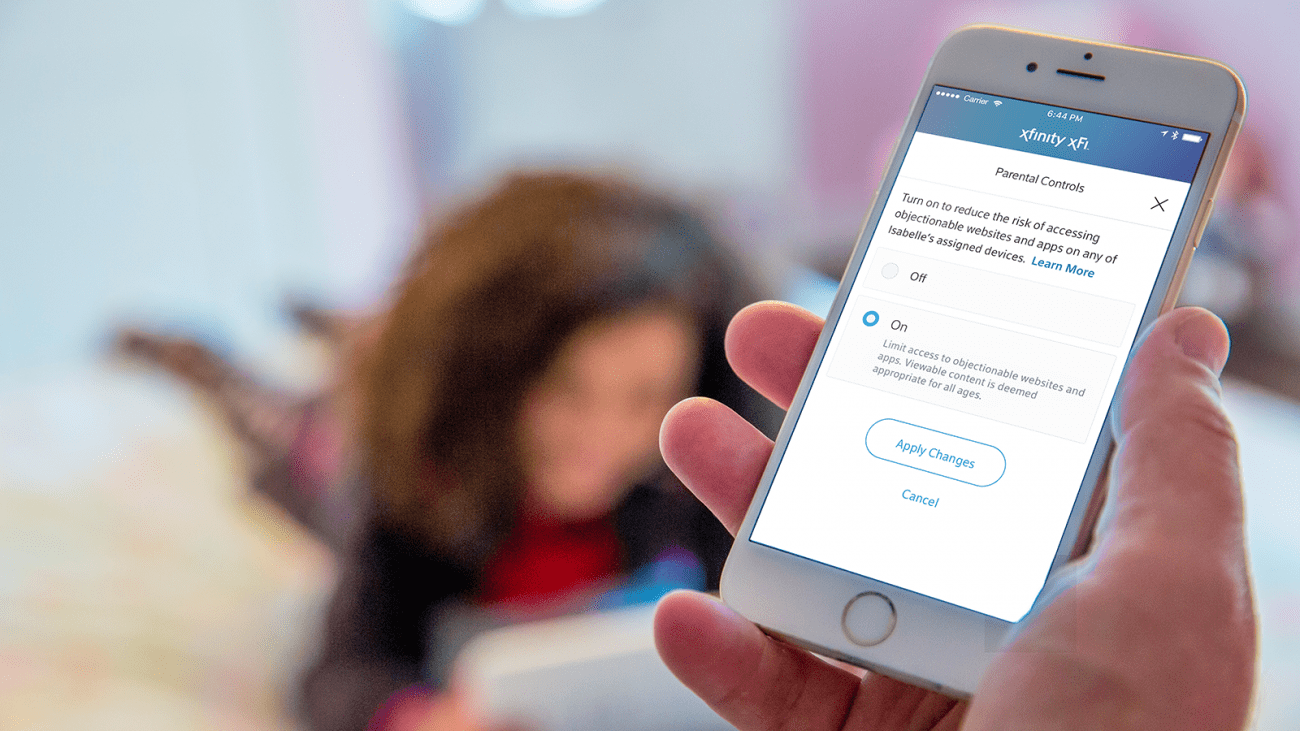Navigating Device Usage with Tweens and Beyond
How do you set the proper ground rules and then enforce them with parental controls? Xfinity gives us some tips.

Deciding when to give a child their first digital device (or worse yet, their first cellphone!) has become a major life decision. For those of us who grew up with the “old,” hard-wired internet, there was a clear distinction between “online life” and “real life.” We had to sit down, sign on, and wait as a little yellow man ran across our screen to the torturous sounds of dialup. Today we are constantly connected, and this is the only world our kids have known. It is unrealistic to completely disconnect, as basic life tasks (and schoolwork) require internet.
So how do you set the proper ground rules and then enforce them with parental controls?
Modeling healthy digital habits is the first step —if you are always staring at your phone, your kids will do the same. But at the same time, taking an interest in your kids’ favorite tech and even participating with them is a great way to keep your relationship strong—who knows, you may even become the next TikTok star in the process!
While tweens and teens use their phones and social media to deepen their friendships and shape their identities, it is important to see technology as simply another tool to perform these very natural parts of growing up.
In fact, while valid concerns such as cyberbullying and online predators exist, Pew Research findings paint a much more optimistic picture. An overwhelming majority of teens reported that social media made them feel more connected to their friends, exposed them to diverse viewpoints, helped them support causes and interests they cared about, and made them feel more secure in themselves. It is in these spaces that kids can form their identities, express their creativity, and learn about the world.
So while usage is inevitable and not necessarily a bad thing, it’s critical for parents to set healthy limits. Before a child gets connected, discuss internet safety, healthy habits, and personal responsibility. Many parents find it useful to craft a Family Cell Phone Agreement, laying out expectations, rules, and consequences for breaking those rules (download a sample here). This gives kids a sense of agency in starting their digital lives, while also keeping them safe and accountable. While devices like iPhones have built-in parental controls to help monitor and track kids, these tools can never be a substitute for an open dialogue and realistic boundaries.
Once you’ve set your rules, there are a lot of ways to use technology to handle some of the enforcement. We reached out to our friends at Xfinity for some useful tips. Joe Sheehy, regional head of product marketing, is just entering this new territory—his oldest son is eight years old, and together they are discovering ways to move their family rules and parenting philosophies into the digital realm. “As a father, I want to make sure he has a healthy digital life, and a balanced life apart from devices. It’s very easy to get lost on the screen,” Sheehy tells us.
When the time came for Sheehy to adjust his family’s mobile plan to add his son (iPad, not cell phone…yet!), Xfinity Mobile presented a great balance of accessibility and parental controls. Offered only to Xfinity Internet customers as a way to help them save money on their cellular bills, Xfinity Mobile combines the nation’s best LTE network with millions of Xfinity WiFi hotspots around the country. Customers automatically connect to Xfinity WiFi when available, saving them data — and money. Xfinity Mobile plans start at just $12 a month for 1 gig of shareable data with no line access fees and unlimited talk and text. For kids who frequently misplace everything, Xfinity has a wide range of devices at different price points, so you can start your tween on a simple, entry level device at just $12 a month.
Within the Xfinity Mobile app, parents can monitor their kids’ data usage, and adjust whether they want to pay by the gig or switch to unlimited data throughout the month. Parents can also set up alerts, so if their kids are getting close to their agreed-upon data limit, they know in advance and can have a conversation about it. As kids grow into teens, have them track their own data usage on the app too – it can be a great way to teach them responsibility and accountability. Keep the conversation going, be flexible, and adjust limits over time.

At home, Xfinity xFi offers more support. Create separate, age-appropriate profiles for each user on the home internet network. Set different bedtimes for each child, “pause” the kids’ devices’ with the touch of a button — like at dinnertime —and create separate “weekend” and “weekday” rules to reflect family life seamlessly.
“Parental controls are there to support the rules you put in place with your children,” Sheehy tells us. “And it helps cut down on arguments. My son gets it now. He knows the internet isn’t on when it’s bedtime, so he doesn’t even ask.”
Read more about Xfinity’s parental controls here.
Photographs courtesy of Comcast.



NO COMMENTS